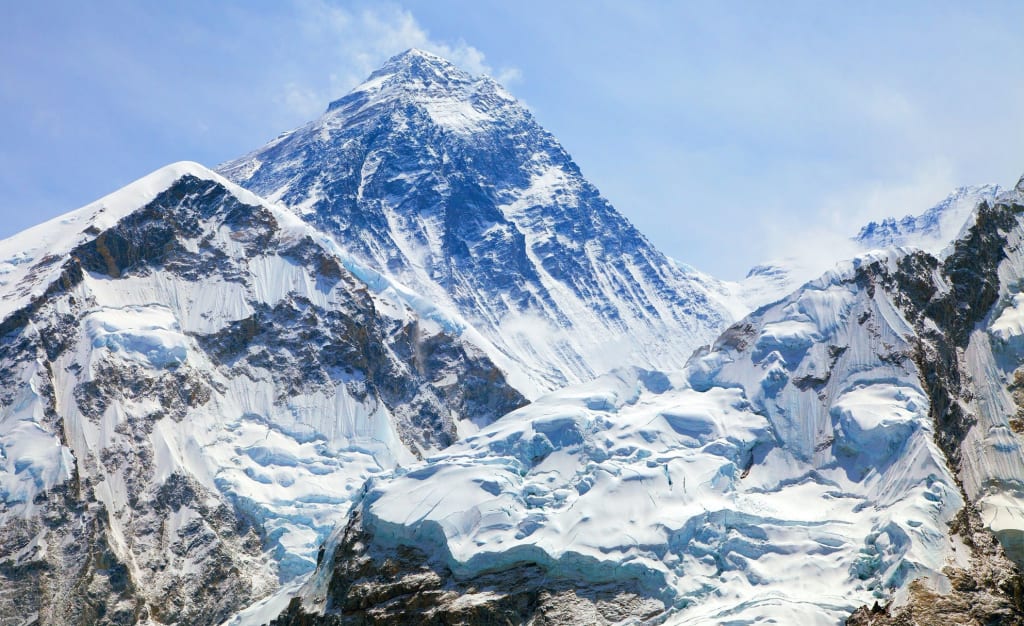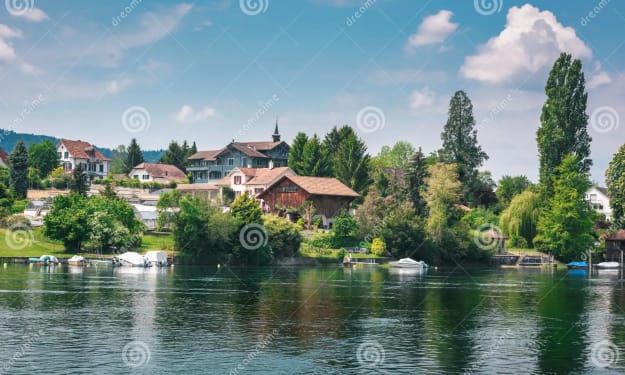Content warning
This story may contain sensitive material or discuss topics that some readers may find distressing. Reader discretion is advised. The views and opinions expressed in this story are those of the author and do not necessarily reflect the official policy or position of Vocal.
MOUNT EVEREST
Earth's highest mountain above sea level, located in the Mahalangur Himal sub-range of the Himalayas

Mount Everest, located in the majestic Himalayas, is the highest peak on Earth, standing at a towering height of 8,848 meters (29,029 feet). It is a symbol of human endurance, exploration, and the triumph of the human spirit. Scaling its summit has been a lifelong dream for many adventurers and mountaineers around the world.
Named after Sir George Everest, a British surveyor, Mount Everest holds a special place in the hearts of both experienced climbers and avid nature enthusiasts. Its awe-inspiring beauty, challenging terrain, and extreme weather conditions make it a formidable test of human strength, courage, and determination.
Every year, a significant number of brave individuals from various countries embark on expeditions to conquer this mighty peak. These expeditions require meticulous planning, physical training, and the guidance of experienced mountaineering teams. Climbers face numerous challenges during their ascent, including thinning oxygen levels, unpredictable weather patterns, and the risk of altitude sickness.
Mount Everest is not only a testament to human achievement but also a breathtaking natural wonder. Its snow-covered slopes, icy ridges, and immense glaciers offer a glimpse into the raw power and beauty of the Earth. The surrounding Himalayan range, with its jagged peaks and deep valleys, adds to the awe-inspiring panorama.
However, it is essential to acknowledge that Mount Everest's popularity and accessibility have also given rise to concerns about overcrowding, environmental impact, and safety. Efforts are being made to ensure responsible tourism and sustainable practices in order to preserve this fragile ecosystem for future generations.
Scaling Mount Everest is an endeavor that demands respect for nature, careful preparation, and a deep understanding of the risks involved. It represents the human desire to explore and conquer the seemingly impossible. Mount Everest stands as a testament to the indomitable human spirit and serves as a reminder that, with determination and perseverance, one can overcome even the greatest challenges.
Whether you are an adventurer seeking to conquer its heights or an admirer appreciating its grandeur from afar, Mount Everest remains an iconic symbol of human courage, resilience, and the unrelenting pursuit of dreams.
Mount Everest, standing majestically at an awe-inspiring height of 8,848 meters (29,029 feet), is the highest peak on Earth and a symbol of human endeavor and resilience. Located in the magnificent Himalayan mountain range, on the border between Nepal and Tibet, Mount Everest has captured the imagination of adventurers, mountaineers, and explorers for centuries.
The mountain's name, "Everest," was bestowed in honor of Sir George Everest, a British surveyor-general who mapped large parts of the Indian subcontinent during the 19th century. Locally, the mountain is known as "Sagarmatha" in Nepal and "Chomolungma" in Tibet, which translates to "Goddess of the Sky" and "Mother Goddess of the Earth" respectively, reflecting the spiritual significance it holds for the local communities.
Conquering Mount Everest is an arduous and perilous undertaking. The first successful ascent to the summit took place on May 29, 1953, led by Sir Edmund Hillary of New Zealand and Tenzing Norgay Sherpa, a Nepalese Sherpa guide. Their achievement marked a historic moment in mountaineering history, showcasing the indomitable human spirit and pushing the boundaries of what was once thought impossible.
Despite its allure, scaling Everest is not without its risks. The extreme altitude, sub-zero temperatures, hurricane-force winds, and treacherous terrain pose significant challenges to climbers. The infamous "Death Zone" above 8,000 meters (26,247 feet) tests the limits of human endurance due to the thin air and reduced oxygen levels, making it a lethal environment.
Over the years, the allure of Everest has attracted thousands of climbers from all corners of the globe, each driven by the desire to conquer this monumental peak. The climbing season, typically from April to May and September to October, sees expeditions from various countries embark on their journey to the summit, each facing their own trials and triumphs along the way.
However, the increased popularity of Everest has brought about concerns regarding the preservation of its pristine environment. The region surrounding Everest is a haven for unique biodiversity, with endangered species and fragile ecosystems. It is essential to balance the desire for adventure with responsible environmental practices to ensure the long-term sustainability of this iconic mountain.
Mount Everest stands as a testament to human resilience, an embodiment of our collective ambition to conquer the unconquerable. It serves as a reminder that through determination, perseverance, and respect for nature, we can push the boundaries of human achievement while preserving the natural wonders that define our planet.
About the Creator
Zaid Adnan
Hope you enjoyed my articles!
Enjoyed the story? Support the Creator.
Subscribe for free to receive all their stories in your feed. You could also pledge your support or give them a one-off tip, letting them know you appreciate their work.






Comments
There are no comments for this story
Be the first to respond and start the conversation.